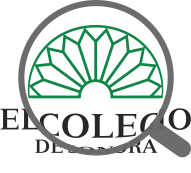International migration and local development: two Otomi towns’ experience in the Mezquital Valley, Hidalgo, Mexico
Migración internacional y desarrollo local: la experiencia de dos localidades otomíes del Valle del Mezquital, Hidalgo, México
| dc.contributor.author | Quezada Ramírez, María Félix | |
| dc.coverage.spatial | MX-SON | en-US |
| dc.creator | QUEZADA RAMIREZ, MARIA FELIX; 42495 | |
| dc.date | 2018-09-01 | |
| dc.date.accessioned | 2022-06-28T19:43:02Z | |
| dc.date.available | 2022-06-28T19:43:02Z | |
| dc.date.issued | 2018-09-01 | |
| dc.identifier | https://regionysociedad.colson.edu.mx:8086/index.php/rys/article/view/975 | |
| dc.identifier | https://doi.org/10.22198/rys.2018.73.a975 | |
| dc.identifier.uri | https://repositorio.colson.edu.mx/handle/2012/45944 | |
| dc.description | This article studies the tourism projects of two Otomi towns in the Mezquital Valley, Hidalgo, and which are located in indigenous municipalities with a high and very high degree of migration intensity, in order to examine migrants’ participation in them. Empirical evidence shows that project implementation was possible thanks to the usufruct of thermal water and the historical forms of community organization. Participation of migrants depends on their citizenship status, which is their main link with the community. Therefore, their contribution was independent of institutional arrangements, such as the 3x1 Program for Migrants. Fieldwork was carried out between 2011 and 2013, and document review, interviews and observation were conducted. | en-US |
| dc.description | En este artículo se estudian los proyectos turísticos de dos localidades otomíes del Valle del Mezquital, Hidalgo, pertenecientes a municipios indígenas con alto y muy alto grado de intensidad migratoria, para examinar la colaboración de los migrantes en ellos. La evidencia empírica muestra que el despliegue de los proyectos fue posible gracias al usufructo del agua termal y las formas históricas de organización comunal. La participación de los migrantes depende de su condición de ciudadanía, que es su vínculo principal con la comunidad; por lo tanto, su contribución fue independiente de esquemas institucionales como el Programa 3x1 para Migrantes. El trabajo de campo se realizó entre 2011 y 2013, y se aplicó la revisión documental, la entrevista y la observación. | es-ES |
| dc.description.abstract | This article studies the tourism projects of two Otomi towns in the Mezquital Valley, Hidalgo, and which are located in indigenous municipalities with a high and very high degree of migration intensity, in order to examine migrants’ participation in them. Empirical evidence shows that project implementation was possible thanks to the usufruct of thermal water and the historical forms of community organization. Participation of migrants depends on their citizenship status, which is their main link with the community. Therefore, their contribution was independent of institutional arrangements, such as the 3x1 Program for Migrants. Fieldwork was carried out between 2011 and 2013, and document review, interviews and observation were conducted. | en-US |
| dc.description.abstract | En este artículo se estudian los proyectos turísticos de dos localidades otomíes del Valle del Mezquital, Hidalgo, pertenecientes a municipios indígenas con alto y muy alto grado de intensidad migratoria, para examinar la colaboración de los migrantes en ellos. La evidencia empírica muestra que el despliegue de los proyectos fue posible gracias al usufructo del agua termal y las formas históricas de organización comunal. La participación de los migrantes depende de su condición de ciudadanía, que es su vínculo principal con la comunidad; por lo tanto, su contribución fue independiente de esquemas institucionales como el Programa 3x1 para Migrantes. El trabajo de campo se realizó entre 2011 y 2013, y se aplicó la revisión documental, la entrevista y la observación. | es-ES |
| dc.language.iso | spa | |
| dc.publisher | El Colegio de Sonora | es-ES |
| dc.rights | Derechos de autor 2018 Maria Felix Quezada Ramírez | es-ES |
| dc.rights | info:eu-repo/semantics/openAccess | es-ES |
| dc.source | 2448-4849 | |
| dc.source | 1870-3925 | |
| dc.source | región y sociedad; Vol. 30 No. 73 (2018): September-December | en-US |
| dc.source | región y sociedad; Vol. 30 Núm. 73 (2018): septiembre-diciembre | es-ES |
| dc.subject | Ciencias Sociales | |
| dc.subject | Migration | en-US |
| dc.subject | Development | en-US |
| dc.subject | Otomi people | en-US |
| dc.subject | Indigenous community | en-US |
| dc.subject | Community citizenship| | en-US |
| dc.subject | Migración | es-ES |
| dc.subject | Desarrollo | es-ES |
| dc.subject | Otomíes | es-ES |
| dc.subject | Comunidad indígena | es-ES |
| dc.subject | Ciudadanía comunitaria | es-ES |
| dc.subject.lcsh | Migration | en-US |
| dc.subject.lcsh | Development | en-US |
| dc.subject.lcsh | Otomi people | en-US |
| dc.subject.lcsh | Indigenous community | en-US |
| dc.subject.lcsh | Community citizenship| | en-US |
| dc.subject.lcsh | Migración | es-ES |
| dc.subject.lcsh | Desarrollo | es-ES |
| dc.subject.lcsh | Otomíes | es-ES |
| dc.subject.lcsh | Comunidad indígena | es-ES |
| dc.subject.lcsh | Ciudadanía comunitaria | es-ES |
| dc.title | International migration and local development: two Otomi towns’ experience in the Mezquital Valley, Hidalgo, Mexico | en-US |
| dc.title | Migración internacional y desarrollo local: la experiencia de dos localidades otomíes del Valle del Mezquital, Hidalgo, México | es-ES |
| dc.type | info:eu-repo/semantics/article | |
| dc.type | info:eu-repo/semantics/publishedVersion | |
| dc.type | Etnográfico | es-ES |
| dc.audience | generalPublic | |
| dc.identificator | 5 |
Files in this item
| Files | Size | Format | View |
|---|---|---|---|
|
There are no files associated with this item. |
|||










